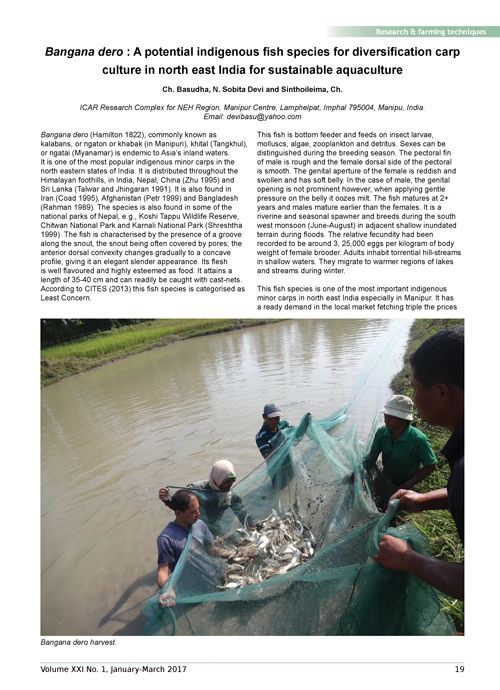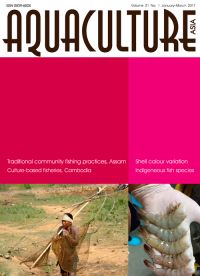Bangana dero: A potential indigenous fish species for diversification of carp culture in north east India for sustainable aquaculture
18 March 2017 | Ch. Basudha, N. Sobita Devi and Sinthoileima, Ch. | 2244 Downloads | .pdf | 3.63 MB | Freshwater finfish, Hatchery and nursery, India, Inland aquaculture, Water quality
Bangana dero is one of the most popular indigenous minor carps in the north eastern states of India, fetching triple the market prices of Indian major carps. B. dero is a bottom feeder and feeds on insect larvae, molluscs, algae, zooplankton and detritus. It is distributed throughout the Himalayan foothills, in India, Nepal, China, Sri Lanka and also occurs in Iran, Afghanistan and Bangladesh. Over the last two decades the occurrence of wild juveniles of this fish in Indian rivers has fallen drastically. A protocol for induced breeding, larviculture, nursery rearing and growout including polyculture of B. dero is described.
Creative Commons Attribution.

